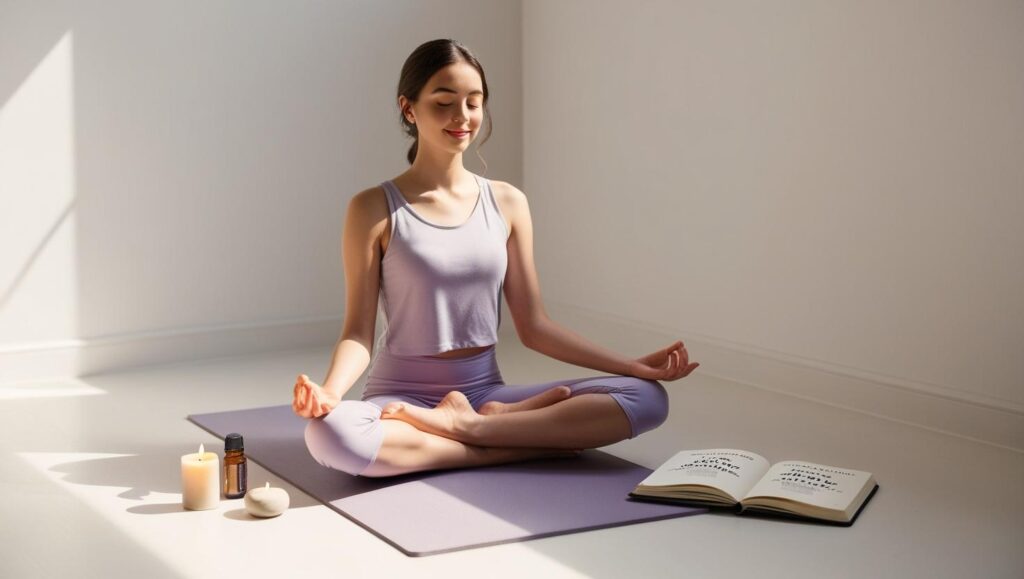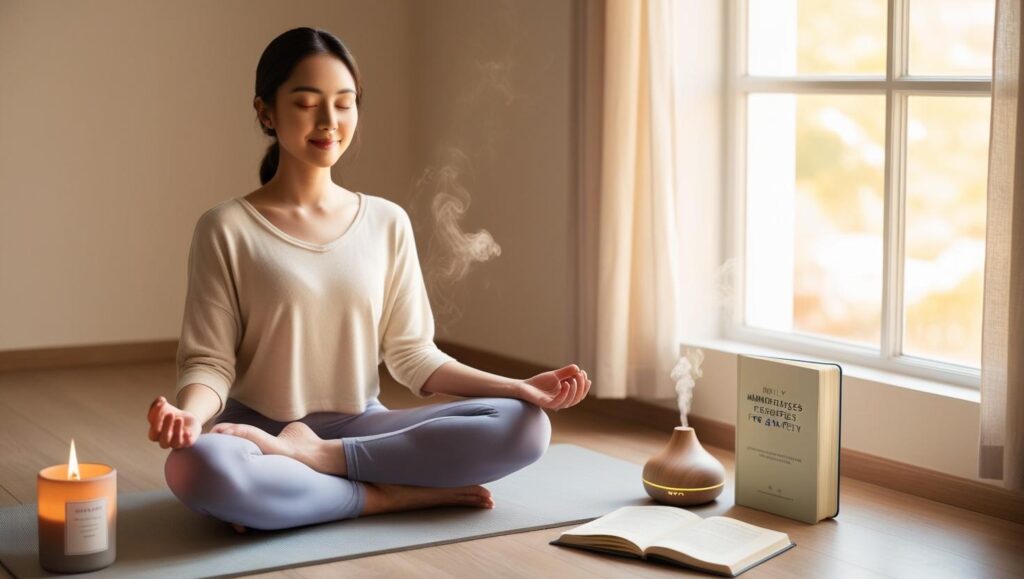These days, anxiety is always by one’s side. Work pressures, domestic duties, or social media noise are all part of one’s life. Stress is all around. Mindfulness provides one with the simple yet potent tool to manage anxiety naturally, calming the mind and getting back to the present.
In the following article, we will delve into simple everyday mindfulness exercises for anxiety you can do without any experience or special tools. With just minutes each day, you will notice improvements in your mood, sense of clarity, and overall well-being.
What is Mindfulness?

Mindfulness is the act of focusing on the here and now — without judgment. It is about observing what is occurring now, whether it is your breathing, your mind, or your environment. Studies have shown that regular mindfulness practice will actually lower symptoms of anxiety, depression, and chronic stress.
“Mindfulness isn’t hard. We just have to remember to do it.” — Sharon Salzberg
Practice mindfulness every day to ease anxiety. Anxiety usually arises from concern with the future or brooding about the past. Mindfulness breaks the cycle by bringing you back to the immediate now. Daily practice of even just minutes may:
- Lower your body’s stress reaction
- Enhance focus and concentration
- Encourage emotional management
- You will sleep better
- Enhance Self-A
Let’s now move on to the top daily mindfulness exercises for anxiety you can practice as part of your routine.
1. Deep Breathing (5 minutes)
How it works: By directing your focus to your breath, it diverts your concentration from worrisome thinking and gets your nervous system to relax.
How to do it: Get comfortable sitting or lying down.
Close your eyes and breathe in slowly through your nose to the count of 4.
Hold your breath for 4 seconds.
Breathe out slowly through your mouth to the count of 6.
Reiterate for 5 minutes
Pro Tip Use the 4-7-8 breathing method if you require quicker panic and anxiety relief.
2. Body Scan Meditation (10 minutes)
How it works It heightens sensitivity to physical sensations and tension, bringing you back into touch with the physical.
How to accomplish it Lie down in a quiet area where you won’t be disturbed.
Shut your eyes and focus your awareness to your toes.
Scan slowly up through your body — legs, stomach, chest, shoulders, and head — and pay attention to any sensations.
If you experience tension, take a deep breath and envision relaxing the area.
Why it helps: By bringing focus to the body, you condition your mind to remain steady instead of getting caught up in worrisome thinking.
3. Mindful Walking (10–15 minutes)
It works by Walking is meditative if you focus both on your movement and the environment.
How to do it: Select a park or a quiet road.
Walk slowly and notice every step — heel, ball, toe.
Feel the sensation of your feet against the ground.
Observe your surroundings: sights, smells, and sounds.
Bonus Tip: Leave your phone behind to remain totally in the moment.
4. Guided Meditation (10-20 minutes)

How it works Listening to guided meditation has the benefit of focusing your mind, particularly during moments of anxiety.
Recommended applications:
- I’d
- Insight Timer
- Smiling Mind is free and ideal for beginners.
To do something Plug in your earbuds and listen along, whether you’re doing a body scan, focusing on the breath, or loving-kindness meditation.
5. Gratitude Journaling (5–10 Minutes)
How it works Anxiety usually arises from fear or deficiency. Using the practice of gratitude reframes your brain to pay attention to the positive in your life.
How to do it Have a notebook handy by your bed or in your backpack.
Write 3 things you are grateful for every morning and/or every night.
Consider why they are important to you.
Dhaka has Gratitude journaling is known to raise overall well-being and lower the level of anxiety symptoms.
6. Five Senses Grounding Exercise (2–3 minutes)
How it works
This rapid and potent method gets you out of your head and into your body through using your senses.
Try the following whenever you feel anxious:
- 5 Things You Can See
- 4 Things That Are Tactile
- 3 sounds you might hear
- 2 odours you can smell
- 1 thing you can taste
Ideal for Panic attacks, overwhelming situations, or being around people.
7. Mindful Eating (during any Meal)
How it works:
We all tend to rush our meals. Taking the time to slow down and focus on what you eat both lessens anxiety and assists digestion.
How to do it:
Turn your TV or cellphone off during meals.
Take deep breaths prior to eating.
Chew slowly and observe the taste, texture, and aroma.
Enjoy every bite.
Why It Works
Introducing mindfulness to routine practices rewires the anxious mind to remain attentive and composed.
8. Loving-Kindness Meditation (10 minutes)
How it works:
Popularly referred to as “metta” meditation, the practice is designed to encourage compassion and decrease critical thinking about oneself, something typical during anxiety.
How to do it:
Sit quietly and shut your eyes.
Repeat silently
- “I may be safe.”
- Let me be well.
- “Let me be happy.”
- “I pray to live comfortably.”
Within minutes, say those words to another person — a loved one, stranger, or even one you find challenging.
Research-backed benefit
Research has identified the practice to raise positive feeling and reduce levels of stress.
9. One-Minute Check In for Mind
It is working.
Micro-mindfulness practice is ideal for hectic schedules or spontaneous bouts of panic.
Steps to do it Stop what you’re doing. Close your eyes and breathe in deeply. Ask yourself What do I feel? “What do I currently require?” Get back to your task with consciousness.
How to Build a Daily Mindfulness Routine

You don’t have to have an hour of silence and incense to start a mindfulness routine. This is how you incorporate the practices into your life with minimal effort:
- Start small: Start at 5 minutes a day and increase slowly.
- Be consistent: Select one time frame – mornings or before bed. Timers, reminders, or apps may help build the habit.
- Keep your progress in mind: Maintain a habit tracker or journal.
- Be gentle with yourself: you don’t have to “get it right” — just appear.
Final Thoughts
Mindfulness is no magic pill, but it is a potent tool for subduing anxiety and transforming your overall quality of life. With practice, you’ll discover that anxiety no longer has its hooks in you, and peace is your default setting. No matter if you attempt deep breathing, gratitude journaling, or just slowing down to eat, every minute of mindfulness is one step further toward peace and mental clarity. Ready to take back your calmness? Begin with one of these exercises today – your mind will thank you.
![]()






